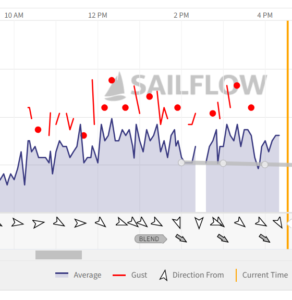This double-header regatta was held at Leesylvania State Park on June 29 and 30 where the Potomac is 2.5 miles wide!
Six races were scheduled and completed in solid 10-15 mph breezes. Well, it went light in one race which challenged the sailors as the boats had to choose the best VMG angles downwind.
Trevor Prior and team from the Susquehanna Yacht Club won. PRSA’s own Aaron Boesenecker with Rick Welch and Lisbet Kugler were second. Joe Buczkowski and team were third.
PRO Nelson Pemberton, mark boat captain, Barney Harris, and team set up the courses and ran the races. Dan Trammel, our judge, ran a redress hearing and provided anyone who asked with help interpreting the rules, Thank you!
Red Fehrle and Suzanne Humphrey prepared a steak and salmon dinner for us while we were out racing. Lindsay Bach, Sheila Campbell, Maryann Gallagher, Christy Chen and many others brought sides to complement the main course. Frank Gallagher and Pam Maple brought breakfast to get the sailors going.
Jim Dillard was one of the forces behind the creation of Leesylvania State Park back in the 1970s. And he made sure it was sailboat friendly with two cranes for launching out boats. It is now the home of a sailing school. Jim was there competing at age 90 in the latest of his series of green Lightnings with his son-in-law Justin and daughter Christy as crew.
Yuengling was again the sponsor of our regatta and we appreciate that continued support.
Results:
2024-Dixie-Districts-Days 1 & 2


